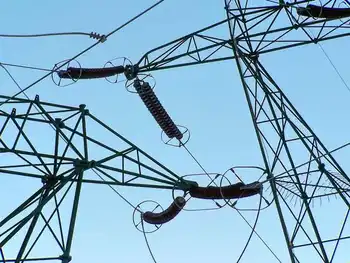Generating power from throwaway food
By CanWest
NFPA 70e Training - Arc Flash
Our customized live online or in‑person group training can be delivered to your staff at your location.

- Live Online
- 6 hours Instructor-led
- Group Training Available
It is already fuelling buses in some municipalities in Sweden, and the technology is beginning to be used in Canada. But it's expensive, and advocates acknowledge either electricity prices have to rise or taxpayers must be willing to subsidize this costly but environmentally efficient energy industry if it is to succeed.
Biogas has been around for decades. Much of the preliminary research was conducted by the South Africans, says Bruce McCallum, past president of the Canadian Bioenergy Association and current chair of its maritime subgroup based in P.E.I. In the 1970s, the University of Manitoba was at the forefront of research, he adds.
“In Europe, like all renewable energy, it's taken off," he said. "In Canada, it's kind of languished in the face of low energy prices and very limited support from government."
Unlike ethanol, which is based on corn, the biogas industry relies on organic waste such as corn husks or on livestock manure.
Manure is generally spread on fields, where it releases harmful methane into the atmosphere (and fills the air for miles around with unpleasant odours), or it is treated and released into the water system in a process similar to composting that uses energy and produces none.
"In Charlottetown, we have a very large composting site," McCallum says. "If we had done our homework, we would have gone with a biogas facility."
In the case of ethanol, food that would otherwise go to feed a starving world is instead diverted to fuel an SUV, says Cedric McLeod, a biogas consultant with McLeod Agronomics of Fredericton.
"You get three times as much net energy from biogas as you would if you used the same area of corn in the ethanol process," he explains.
"The soccer moms feel good about ethanol. But is it a good use of our energy resources? I would say no. Because you're only satisfying our need to drive. The fact that you can get three times the energy out of a biogas plant from the same amount of acres tells me we've made the wrong choice."
The "beauty of biogas," says McLeod, is that it relies on food waste, not food. Anything carbon-based can be heated anaerobically (without adding oxygen) in a biogas digester, turned into methane, then burned to turn turbines and produce electricity. Byproducts include nitrogen, phosphorus, magnesium and potassium, i.e. fertilizer. The process results in no unpleasant odours.
"Rendering is a thing of the past since BSE," adds McLeod. "Meat products could all be fed through a biogas network ... All these things give us a headache because we have to find a place to landfill them. If it all goes through biogas, you get the energy, and you also get the nutrients."
But the exploitation of biogas is hindered by its profit margin, says Eric Camirand, president and founder of Electrigaz Technologies Inc. and head of lobby group Biogaz Quebec. There isn't one, at least not at current electricity rates, and that's the crux of the problem.
"Let's say a utility has a call out for power," says Camirand. "It's going to buy the cheapest, and that's going to be wind or hydro."
Some provinces have developed programs to buy electricity from independent producers. For example, in 2006 Ontario began paying 11 cents per kilowatt hour to anyone willing to feed electricity into its power grid.
While it provides a decent return for developers of wind power, the amount doesn't cover the costs of energy production from biogas, which costs between 10 and 12 cents to develop, depending on the waste being heated.
“There's no outlet for the energy (produced by biogas)," says Camirand. "The energy we produce is more expensive. We cannot keep up with petroleum or the hydro dam."
Experts will point out that Ontario benefits from an added incentive: the Ontario government allows biogas companies to charge clients who bring in waste a tipping fee. The pork farmer or the cattle farmer who trucks in his or her manure, for example, can be charged to leave it there, just as they are for dropping it off at the dump or municipal sewage lagoons.
It's that tipping fee that just allows some Ontario biogas facilities to remain solvent, says Camirand. But it's barely enough, and so far, only Ontario can make a go of it. The solution, he says, is a graduated system for the different forms of sustainable energy. In other words, differing subsidies based on the technology.
In Germany, the government pays more for energy developed through biogas digesters than it does for energy derived from wind. The profit margins for both technologies remain the same, however.
Another solution? A rigorous carbon trading system, says Camirand.
"Penalize people who are polluting," he says. "If you're landfilling (waste), you're creating methane that ends up in the atmosphere ... However, (a carbon trading system) across the country would help measure polluters versus people trying to do the opposite. It would help these biogas projects trying to come along."
What does the future hold?
"In two years, it'll be pretty much business as usual," says Camirand. "There will be enough (digesters) built in Ontario for politicians to say 'Yes, this is a successful program,' but not much more."
However, if the price paid per kilowatt hour approaches 20 cents, watch investment in biogas take off, predicts McLeod. Until then, unless governments step in, power companies will argue biogas is too costly.
"What it will take is policy," he says. "We need governments willing to invest in communities to make their own power. Here in New Brunswick, we use a lot of Colombian coal. We use coal from Colombia to make up our shortfall from nuclear and hydro energy. We send tens of millions of dollars a year to Colombia. Is that a good use of tax dollars?"











